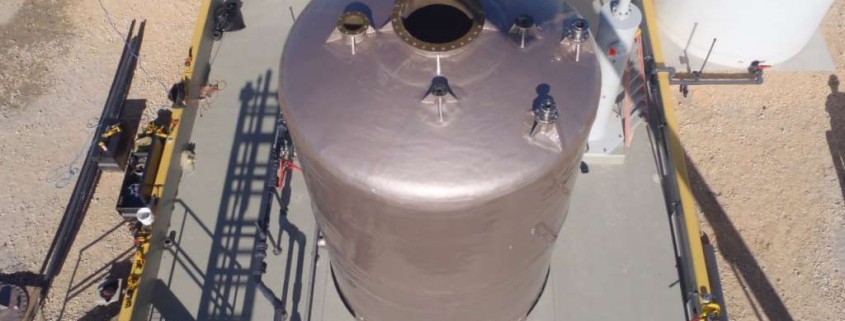There’s a New Tank in Town
From the Bakken and Three Forks to the Eagle Ford Shale – There’s a New Tank in Town
Maybe you’re sitting in small family owned diner in Williston, ND ordering breakfast. It’s early, the sun is just coming up, but you can’t help noticing that the place is jam-packed—barely enough elbowroom for people to get their coffee and go. The people are lively and there is an indescribable energy in the room. The business coming into towns like this is non-stop and the people are salt of the earth, roughnecks, truckers, locals—all filling up on good food before a hard day’s work.
Oil and gas boomtowns like Williston, ND and are becoming an iconic part of the new American landscape. Prior to oil and gas showing up ranchers may have joked that in order to make it raising cattle you needed to start with a large fortune. For the moment, and foreseeable future that’s all changed—economies in these boomtowns are growing rapidly and there are jobs to go around. But it’s not just happening in North Dakota, it’s happening in Texas, Oklahoma, Pennsylvania, and Ohio—among other states.
If you’ve never heard of the Bakken Shale before you may be living under a rock. The Bakken is a world-class shale formation located in North Dakota that contains even more energy resources potential then previously thought. On April 30, 2013 the US Geological Survey released it most recent analysis of the shale deposit and concluded that there are approximately 7.4 billion barrels (double its previous calculations), making it the largest oil field in the country.
All this good news for oil and gas and energy independence means growth in other areas too. I’m not just thinking of the local economies. I’m also thinking of fiberglass and FRP products, specifically corrosion resistant tanks, vessels and pipe that are utilized by the petrochemical industry. One of the many challenges facing oil and gas operators is finding high quality corrosion resistant solutions to transport, handle and batch fracking fluid, HCL and other corrosive media.
A critical component of the war waged on corrosion is finding an engineer-design-manufacture company of corrosion resistant tanks that has the intelligence and know-how to interface FRP tanks/products with their fleet of trucks. In addition, the tanks need to meet the customer’s specifications, including aesthetics, and be able to operate effectively under the specified operating conditions.
Fiberglass or FRP are viewed by many as one of the most cost-effective materials that can be used to address or mitigate the impacts of corrosion. Fiberglass is often chosen to replace flake lined steel and tnemec lined/coated tanks, which have been susceptible to leaks presumably caused by twisting and flexing, bonding methods and thermal expansion. Fiberglass is a unique material that provides long life cycles and durability. Fiberglass offers a high strength-to-weight ratio and dimensional stability. Where other materials fall short or succumb to corrosion and general wear and tear, fiberglass thrives and endures—an important distinction in the oil and gas fields.
Beetle is a competitive company driven by the pursuit of fiberglass excellence. We have the ability to match volume, supply and quality demands. Our product opportunities go far beyond the tank. For example, we can create a multitude of custom add-ons such as barbed flanges, fenders, dip tubes, roll-over protection, man ways, and ladders—to name a few.
Click here to Contact Us and see how we can help with your storage and processing requirements.
See how Beetle solved a customer’s corrosive chemical storage problem using a fiberglass tank!








